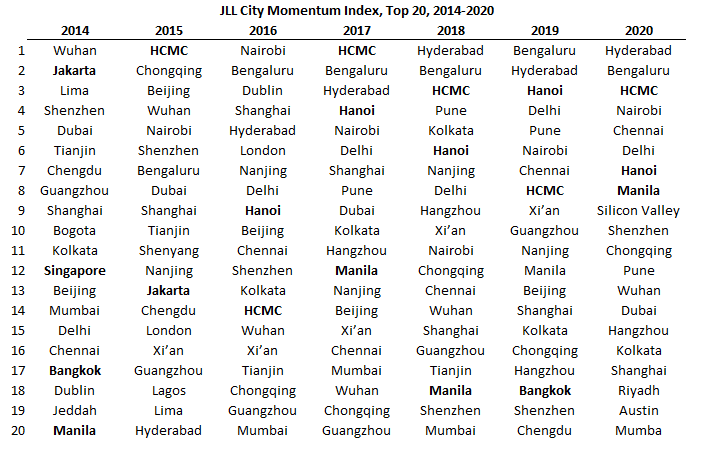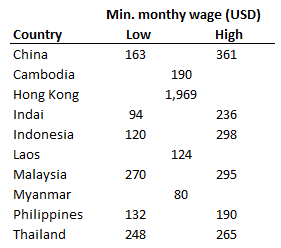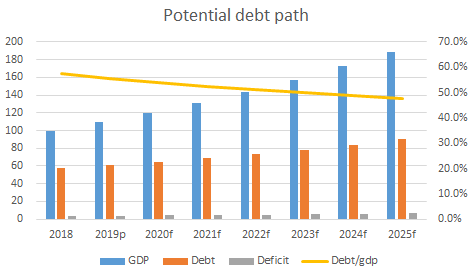A few market stories
/So to move on from coronavirus, I thought I would write a few stories about major market moves.
GAB: The first is this interesting company, GAB, now called FLC Mining Investment and Asset Management JSC, that produces bricks, among other things. The other things are especially interesting, because they include selling paints and exporting cinnamon. Let’s just say the company is not super-focused.
Source: GAB (now FLC Mining Investment & Asset Management Stock)
Source; Vietstock.vn.com, chart by Vietecon.com
But this is normal for emerging countries and markets. Lots of companies get into businesses based on someone’s expertise or connection or just luck. And that can work really well. The market cap is small at just $32m (VND745bn), but it is way up from $8m (VND200bn) when the company went public back in July.
There are reasons for the massive stock increase. Both revenues and profits more than doubled in 2019, and the company announced that it would sell 55.2m shares at par value of VND10,000/share, to raise VND552bn, or $24m. That will almost double capital at the company. It will use the money to invest in new businesses, including renewable energy, real estate, and air transport. Of this, VND332bn is specifically set aside for investment in the Coastal Hill Hotel Project in Quy Nhon, an up-and-coming travel destination (or…if CNN is writing about it, it’s probably already come and gone).
I kind of don’t know how to think of this company. I mean, it is crazy that the stock has jumped so much, and it sounds like it is unsustainable. The business is fine, but not exciting. Bricks, while probably a growth business, is not something that is going to get investors so excited.
But looking deeper, the company is partially (8.9%) owned by FLC, which owns Bamboo Airlines and a number of resorts, including a number in Quy Nhon. Many of FLC’s businesses are similar and/or complementary to GAB. So I assume people are betting that GAB will benefit from FLC’s growth, and that is helped by the name and the announcement of three new board directors (at least one is from FLC, as far as I can tell) and three supervisory board members.
This just goes to show that analyzing stocks requires a very holistic view - you can’t just look at the numbers. It will be interesting to see if FLC increases its stake in GAB, or it instead uses capital invested in GAB to help support its investments in a number of its own businesses, like the hotel in Quy Nhon.
Other small cap stocks:
Stock price in VND. Source; Vietstock.com.vn chart by Vietecon.com
I don’t really want to dwell on these, because they are mostly unimportant. But I think it is illuminating to see how volatile smaller cap stocks are in Vietnam, so much more than the large cap ones (which can be pretty volatile on their own).
Two examples:
LMH: This is a company that started out a gas station operator and has moved into real estate and now into renewable energy, specifically storage and solar. This transition is going to be difficult, especially because both renewables and real estate can be capital intensive, plus real estate has very specific P&L implications, as we saw in LHM’s 2019 results. Revenues fell by almost 50%, and net profit was down 86%.
The market cap of LMH is less than $2m, and profits are just over $100,000. But they were almost $1m last year, so if they could just get some of that magic back, then the company should do fine - it is trading at just 2.3x or so 2018 earnings. That goes to 18x for 2019!
One other comment: the stock barely trades some days: less than 200 shares a day. So it’s hard to get into as a professional investor. And as a retail investor, I think I would need more info about the management team. Can they really make this transition happen? And why can’t the petrol stations do better? I mean, there is a massive increase in cars and motorbikes: don’t they need gas?
Stock price in VND. Source; Vietstock.com.vn chart by Vietecon.com
VRC: The other example is a pure-play real estate company, VRC Real Estate and Investment JSC. As discussed above, real estate earnings can be quite volatile, as we can see in 4Q earnings for VRC, when revenues fell 82% and profits 99%. It looks like it was due to few deliveries of real estate projects. Overall, 2019 was bad: revenues fell 71% and profit dropped 91%. The stock crashed in the past month and a half and is down 80% from its last high in December.
I don’t really know why the stock crashed. The company doesn’t seem to know, and in response to the crash, it says it will buy back shares.
It would take more investigation to find out what’s really happening, but it is interesting to see that SCIC increased its stake in VRC to above 11% at the end of November. SCIC is a state-owned investment company.
Conclusion: And the point I wanted to make is that in smaller companies, oftentimes there is not a reason why their stocks go up or down, or at least no transparent reason. I think for both of these stocks, it will be interesting to watch what happens. I actually could see both of them coming back very strong, because the underlying businesses seem alright. But, again, I don’t know too much about them.





















































